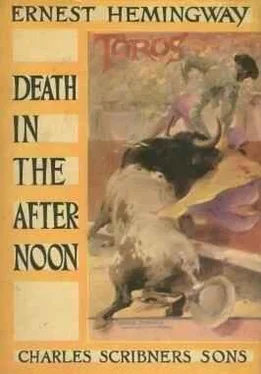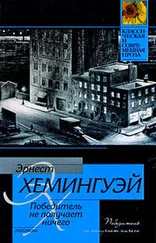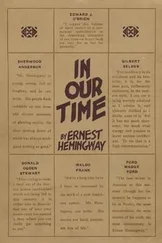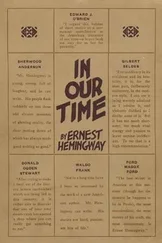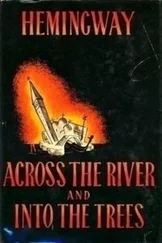V. R.— 25 years old; American; convent and college education; good horsewoman; liked fights tremendously from start; completely unaffected by horses; has attended fights whenever possible ever since seeing her first one. Enjoys boxing very much — enjoys horse-racing — does not care for bicycle-racing — likes to gamble.
A. U.— 32 years old; American; college education; poet; great sensitivity; all-around athlete; keen esthetic appreciation, of music, painting, letters; rode horses in the army; not a horseman. Does not care for gambling — deeply affected by seeing bulls charge horses in first fight, but this did not prevent his enjoyment of bullfight. Appreciated matadors' work intensely and was ready to row with spectators who were hooting them. Has not been where he could see bullfights since that fall.
S. A.— Internationally famous novelist writing in Yiddish. Had luck to see excellent bullfight his first time in Madrid — declared there was no emotion comparable in intensity except first sexual intercourse.
Mrs. M. W.— 40 years old; American; education, private schools; not good at sports; has ridden horses; keen esthetic appreciation of music, painting, writing; generous, intelligent, loyal, attractive; very good mother. Did not look at horses — kept her eyes away — enjoyed rest of bullfight, but would not care to see many. Very fond of having a good time and very intelligent about knowing what it consists in.
W. A.— 29 years old; American; male; successful journalist; college education; no horseman; very civilized appreciation of food and drink; well read and wide experience; was disappointed in first fight, but not at all shocked by horses; in fact enjoyed horse part, but tended to be bored by the rest of fight; became rather interested in fights finally and brought wife to Spain, but she disliked them and the next year W. A. no longer followed them. Had bad luck nearly always to see bad fights — was close follower of boxing for a time, but no longer goes to fights. Does little gambling — loves food, drink and good conversation. Extremely intelligent.
In these few reactions of individuals I have tried to be completely accurate as to their first and ultimate impressions of the bullfight. The only conclusion I draw from these reactions is that some people will like the fights and others will not. Because I had never seen her before I could not chronicle the history of an Englishwoman who looked to be about thirty-five I saw once at San Sebastian who was attending the bullfight with her husband and was so overcome by the horses being charged by the bulls that she cried as though they were her own horses or her own children who were being gored. She left the ring crying but urging her husband to stay. She had not meant to make a demonstration, it had only been too horrible for her to stand. She looked a very fine and pleasant woman and I felt very sorry for her. Nor have I described the reactions of a Spanish girl who attended a fight at La Coruña with either her young husband or fiancé and who cried very much and suffered all through the corrida but remained in her seat. These are, speaking absolutely truthfully, the only women I have seen cry at over three hundred bullfights. It is to be understood, of course, that at these fights I could only observe my very immediate neighbors.
A SHORT ESTIMATE OF THE AMERICAN, SIDNEY FRANKLIN, AS A MATADOR
Most Spaniards do not go to bull fights, only a small proportion do, and of those who attend, the competent aficionados are limited in number. Yet many times I have heard people say that they asked a Spaniard, an actual Spaniard, mind you, what sort of bullfighter Sidney Franklin was, and the Spaniard said he was very brave but very awkward and did not know what it was all about. If you asked that Spaniard if he had seen Franklin fight he would say no; what has happened is that he has told the way, from national pride, the Spaniards hoped he would fight. He does not fight that way at all.
Franklin is brave with a cold, serene, and intelligent valor but instead of being awkward and ignorant he is one of the most skillful, graceful, and slow manipulators of a cape fighting to-day. His repertoire with the cape is enormous but he does not attempt by a varied repertoire to escape from the performance of the veronica as the base of his cape work and his veronicas are classical, very emotional, and beautifully timed and executed. You will find no Spaniard who ever saw him fight who will deny his artistry and excellence with the cape.
He does not place banderillas, never having studied or practiced this properly, and this is a serious omission since, with his physique, judgment of distance, and coolness, he could have been a very good banderillero.
Franklin manages the muleta well with his right hand but uses his left hand far too little. He kills easily and well. He does not give the importance to killing that it merits, since it is easy for him and because he ignores the danger. Profiling with more style his kills would gain greatly in emotion.
He is a better, more scientific, more intelligent, and more finished matador than all but about six of the full matadors in Spain to-day and the bullfighters know it and have the utmost respect for him.
It is too late for him to become a good banderillero, but he understands his other faults and is constantly correcting them. With the cape he has no improvement to make; he is a professor, a Doctor of Tauromachia, and not only a classic artist but an inventor and innovator as well.
He was formed and taught by Rodolfo Gaona, the Mexican, the only matador who ever competed on equal terms with Joselito and Belmonte and who himself was formed and taught by a banderillero of the great Frascuelo, who gave him the most complete training in the classic fundamentals of bullfighting which are ignored by most young matadors who have much courage, a little grace and youth, and posture and hope for the best; and it was the art and soundness of Franklin's fighting which he learned in the best school possible which so amazed and enthused the Spaniards.
He had great and legitimate artistic triumphs in Sevilla, Madrid, and San Sebastian before the elite of the aficionados as well as triumphs in Cadiz, Ceuta, and other towns in the provinces. He filled the Madrid ring so there was not a ticket to be had three times running, the first time as an American and a novelty every one was curious to see after his great success in Sevilla, but the next two on his merits as a bullfighter. That was in 1929 and that year he could have taken the alternative as a formal matador de toros at any one of half a dozen cities, and I would then have written of him in the body of this book with the other matadors de toros, but he wisely wanted another year as a novillero, he was fighting as often as he wished and getting more as a novillero than many matadors de toros, and another year as a novillero would give him that much more time to perfect his work with the muleta and his experience and knowledge of the Spanish bulls, which are quite different from the Mexican. He ran into bad luck on his second fight early in March of 1930, when he was gored by a bull he had turned his back to after having put the sword in and received a tremendous wound that perforated the rectum, sphincter muscle and large intestine, and when he was able to start filling his contracts his wound was still open and he fought through the season in bad physical shape. During the winter of 1930-31 he fought in Mexico and alternating with Marcial Lalanda in Nuevo Laredo he received an unimportant horn wound in the calf of the leg which would have caused him no inconvenience (he fought the following Sunday), except that the surgeon who attended him insisted on administering antitetanus and anti-gangrene vaccine. These injections coming too soon after the usual injections of the same serums he had received when he was wounded in Madrid caused a breaking out in a sort of boil on his left arm which swelled and made the arm nearly useless and spoiled his 1931 season in Spain. Then too he came to Spain from Mexico with plenty of money from his winter campaign and more desire to enjoy life than to start in fighting at once. He had made the Madrid ring pay him the very top price when he was in such demand the year before and as soon as he decided that he was ready to fight the management took their revenge by the typically Spanish method of putting him off on one pretext or another until they had all their dates contracted for.
Читать дальше
Конец ознакомительного отрывка
Купить книгу
